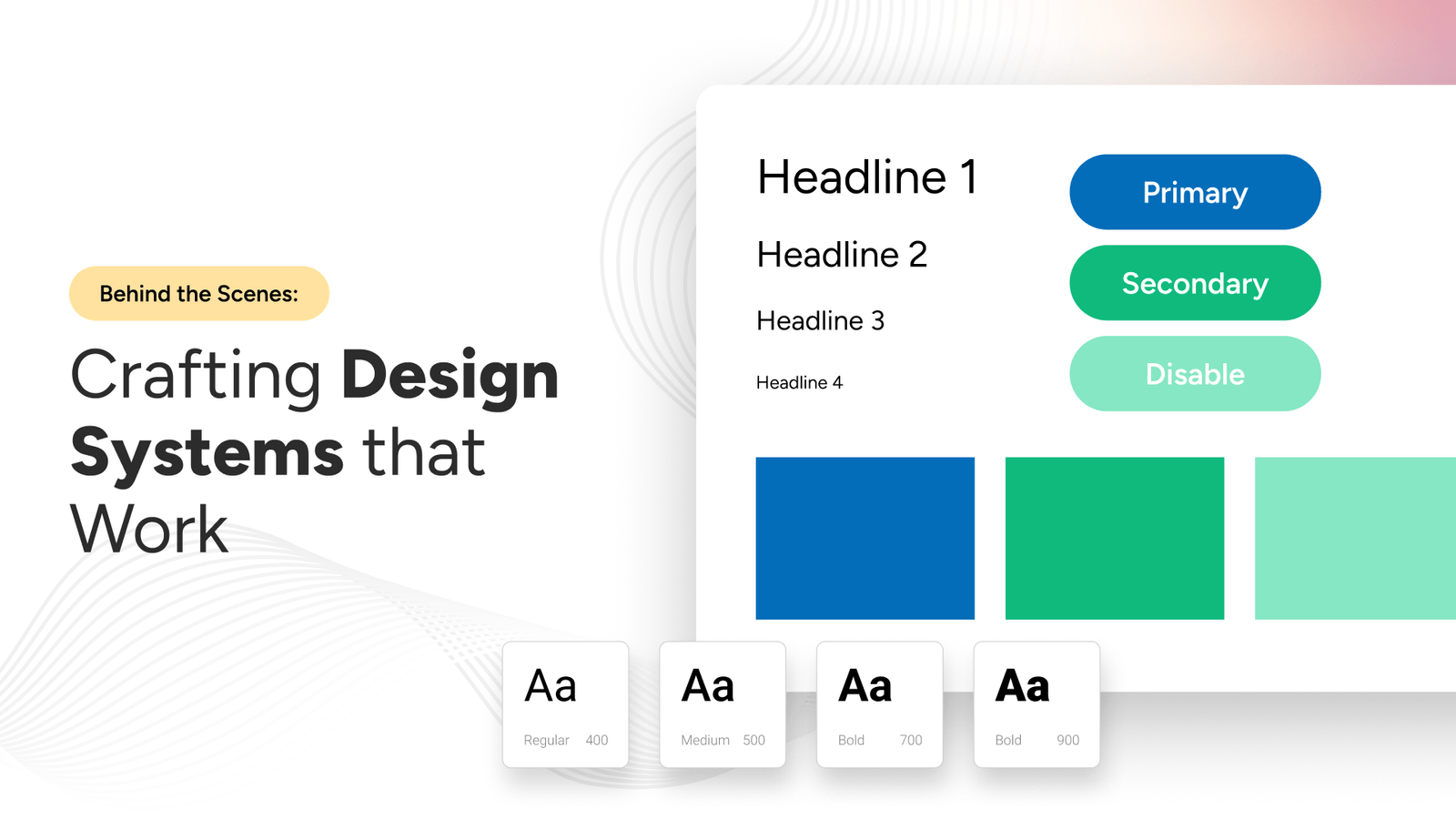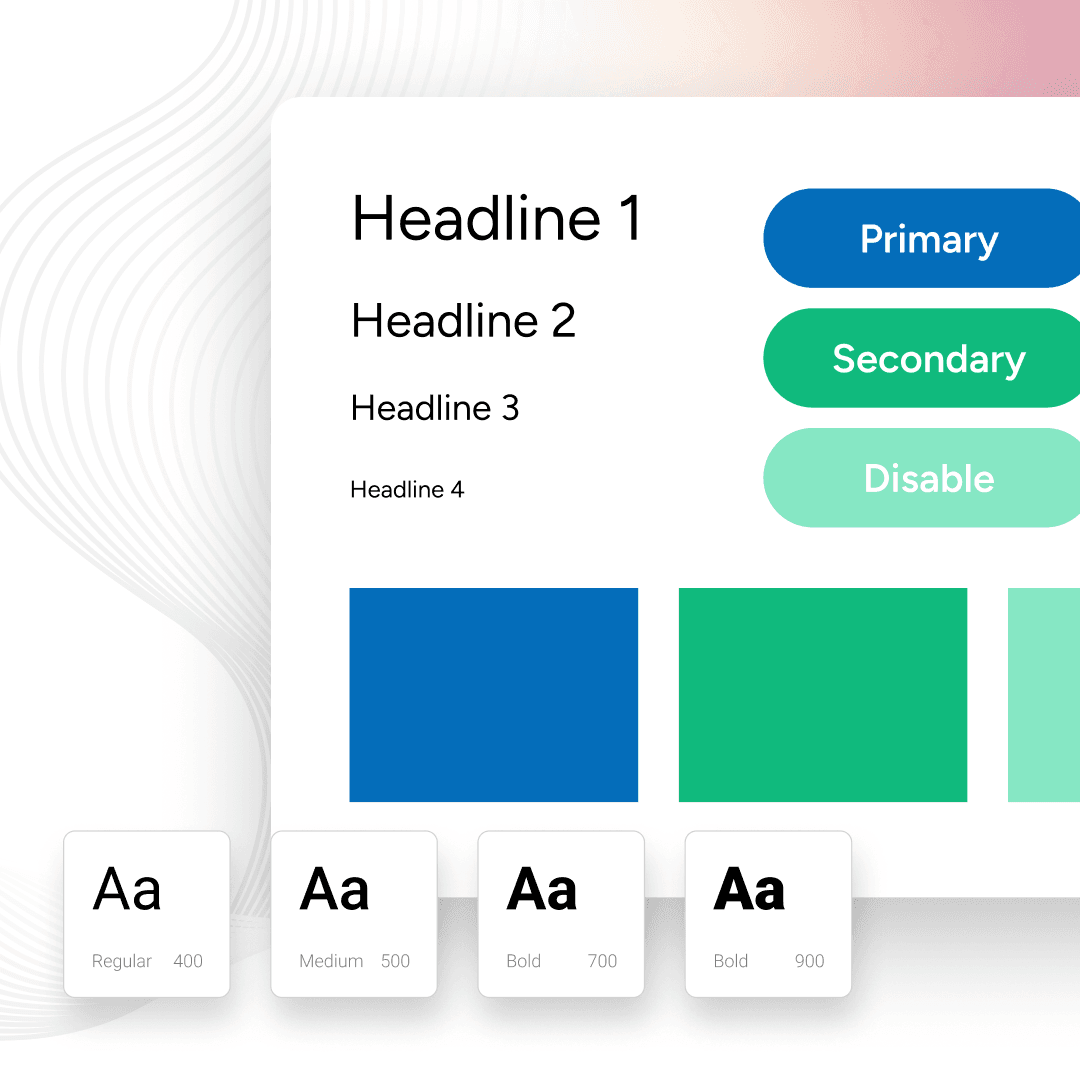Creating a cohesive and efficient design system is essential for maintaining consistency, improving collaboration, and accelerating the design process within an organization. A well-crafted design system serves as a single source of truth for your team, ensuring that everyone from designers to developers is aligned. But what goes into making a design system that truly works? Let’s take a look behind the scenes at the key elements and best practices for crafting effective design systems.
Understanding Design Systems
A design system is a collection of reusable components, guided by clear standards, that can be assembled together to build any number of applications. It includes design principles, UI components, patterns, and guidelines for usage. The goal is to create a unified user experience across all products and platforms.
Key elements of a design system
1. Design principles
- These are the foundational beliefs that guide the design process. They ensure that all design decisions align with the brand’s core values and user needs.
- Example: A principle might be “Accessibility First,” ensuring that all components are designed with accessibility in mind
2. UI components
- Reusable building blocks such as buttons, forms, and navigation elements. These components are designed to be consistent and flexible.
- Example: A button component with variations for primary, secondary, and disabled states.
3. Patterns
- Solutions to common design problems that can be reused across different parts of the application.
- Example: A login form pattern that includes fields for username and password, with error handling.
4. Guidelines and documentation
- Clear instructions on how to use the components and patterns. This includes code snippets, visual examples, and dos and don’ts.
- Example: Documentation on how to implement a modal component, with examples of proper usage.
5. Token system
- Design tokens are the smallest pieces of a design system, such as colors, fonts, spacing, and animations. They ensure consistency in the look and feel of the UI.
- Example: A color token named `primary-color` that is used consistently for primary actions across the application.
The process of crafting a design system
1. Conducting a design audit
Before creating a design system, conduct a design audit to inventory all existing design assets and identify inconsistencies. This helps in understanding what needs to be standardized and improved.
- Step: Gather all UI components, patterns, and styles from different products and platforms.
- Outcome: A comprehensive list of current design assets and their variations.
2. Defining design principles
Establish clear design principles that will guide the design system. These principles should reflect the brand’s values and goals.
- Step: Collaborate with stakeholders to define and document these principles.
- Outcome: A set of design principles that align with the brand’s mission and user needs.
3. Creating a component library
Develop a library of reusable UI components. Each component should be designed to be flexible and adaptable to different contexts.
- Step: Design and code each component, ensuring they adhere to the design principles.
- Outcome: A robust library of UI components that can be easily implemented and customized
4. Developing patterns
Identify common design problems and create patterns that provide solutions. These patterns help in maintaining consistency and efficiency.
- Step: Document and design patterns for common use cases, such as forms, navigation, and modals.
- Outcome: A set of design patterns that can be reused across different applications
5. Documenting guidelines
Create thorough documentation that provides clear guidelines on how to use the components and patterns. This ensures that everyone on the team can easily implement the design system.
- Step: Write detailed documentation with visual examples and code snippets.
- Outcome: A comprehensive guide that helps designers and developers use the design system effectively.
6. Implementing a token system
Establish a system of design tokens for colors, fonts, spacing, and other styles. This ensures that the visual aspects of the UI are consistent.
- Step: Define and document design tokens, and integrate them into the component library.
- Outcome: A token system that provides a consistent look and feel across all UI elements.
Maintaining and evolving the design system
A design system is a living document that needs to be maintained and updated regularly. Establish a process for reviewing and updating the system to ensure it evolves with the needs of the organization and its users.
- Step: Schedule regular reviews and gather feedback from the team.
- Outcome: A design system that remains relevant and effective over time
Crafting a design system that works involves careful planning, collaboration, and ongoing maintenance. By conducting a design audit, defining principles, creating reusable components and patterns, and providing clear documentation, you can create a design system that enhances consistency, improves efficiency, and ensures a unified user experience. Remember, a successful design system is not static—it evolves with your team’s needs and the changing landscape of your digital products.







